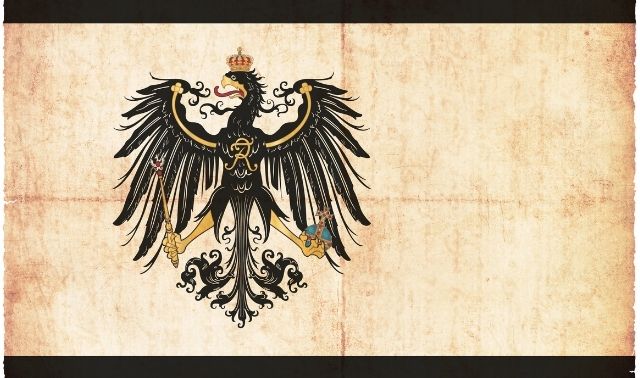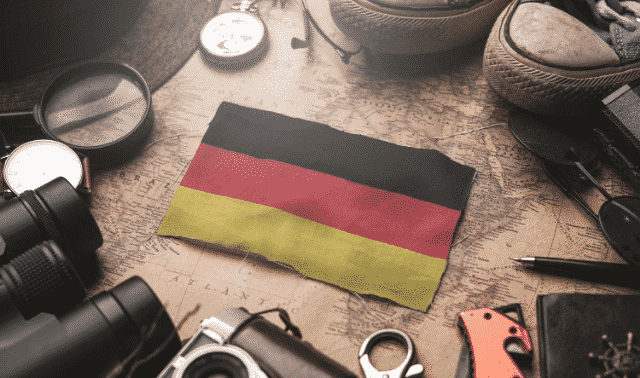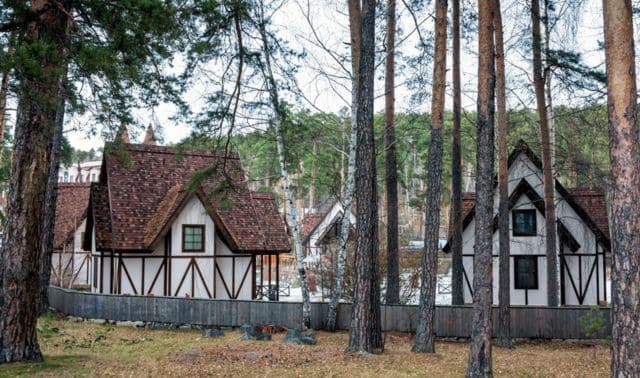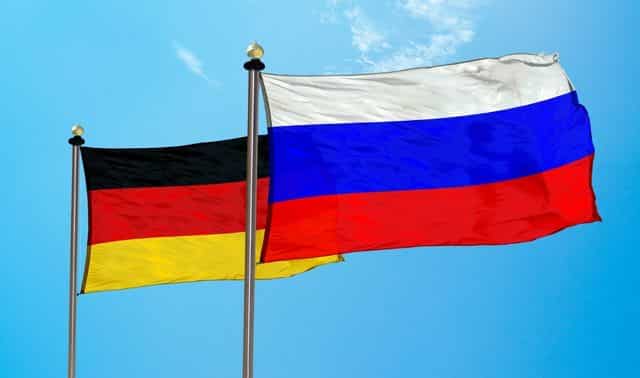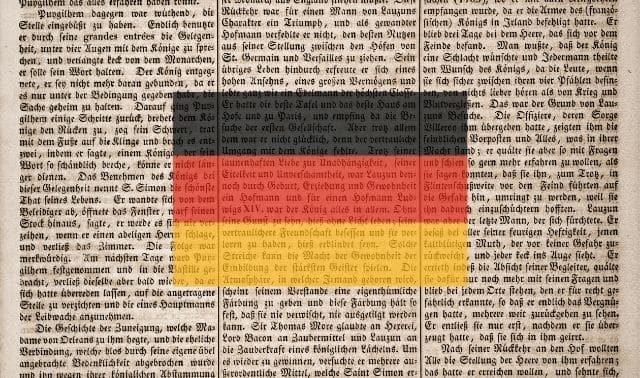Sign up for the Family Tree Newsletter Plus, you’ll receive our 10 Essential Genealogy Research Forms PDF as a special thank you!
Get Your Free Genealogy Forms
"*" indicates required fields

In this era of globalization, it’s easy to think of ourselves as citizens of the world. If you turn the clock back a century, though, you’ll see people took a much more regional view. Italians considered themselves Sicilians, Sardinians, Tuscans or Venetians. Regional loyalties in America helped start the Civil War. And the people we now call Germans referred to themselves as anything but.
In those days, you had Prussians and Bavarians, Palatines and Hessians, Saxons and Swabians—who all spoke various dialects of German and were united only in their dislike for each other. “In Europe as well as America, immigrants who came from Prussia didn’t like the immigrants from Bavaria, and the Bavarians didn’t like the Prussians,” says German genealogy scholar John T. Humphrey. “And immigrants from Swabia in southern Germany did not like either one.”
Because finding a German immigrant’s village of origin is so crucial to genealogical research, this more provincial view can be helpful in narrowing the search from “Germany” to a more-manageable area. But territorial shifts can create difficulties in matching up the names of current and former entities to which the villages belonged.
ADVERTISEMENT
How this evolved is the stuff of many volumes, but in short, Germany’s history is unlike that of England, France or Spain, where the king’s central authority eclipsed feudal nobles’ power by the 1600s. Germany, on the other hand, remained a collection of several hundred independent states until unification in 1871.
This patchwork political landscape is good and bad for genealogists. Before the 1870s, record-keeping was inconsistent from one German state to another—and availability is spotty. But if you can pinpoint an immigrant’s origin in a particular German state, your ancestral search will be kein Problem.
From many microstates to a few large states
Over the centuries, some local dynasties became extinct and others married into new amalgamations of territories. Until a reorganization in the early 1800s, the average German “microstate” had a mere 2,500 people, and boundaries changed constantly. Following the Protestant Reformation in the 16th and 17th centuries, each state was supposed to adopt its ruler’s religion, but this often wasn’t uniformly enforced.
ADVERTISEMENT
One big German word spelled the end for a lot of little states in 1803: Reichsdeputationshauptschluss—the final high decision of the Imperial Diet of the Holy Roman Empire. It eliminated the microstates and secularized the ecclesiastical states that had been under the power of Roman Catholic bishops and archbishops. This reduced the number of German states from several hundred to just 39 in 1815.
The climate had become ripe for such a consolidation during the 1700s, when most nobles freed their serfs—but kept the right to tax and receive a portion of the farmers’ crops as a feudal obligation. “The German nobility changed its attitude from being like the overseer—as they were when the common people were serfs—to more of a landlord with tenants,” says Kenneth Heger, a German history specialist and administrator with the National Archives and Records Administration (NARA). “This was a change in outlook from running a really big farm to wanting to have a lavish palace built.”
The rulers of the remaining 39 states—who suddenly had much larger territories—began looking at the bigger picture of what we now call infrastructure: Roads, for example, had been poor because many microstates were small enough to traverse in a day. Farms, too, were generally small and inefficient. The nobles of the microstates willingly gave up their sovereignty because “they didn’t lose their personally owned lands and contracts for service— many ended up with more clout as part of a larger state and a seat in the upper house of that state’s legislature,” Heger says. And the aftereffects—better road systems, more miles of railroads and the need for fewer farmers in the 1800s—helped spur massive emigration from German states in the 1800s.
You can follow the splits and mergers of the German microstates through the centuries in Gerhard Koelber’s Historische Lexikon.

Reviewing the records
Certain genealogical guidelines apply to all German states—for one, church records are the most helpful resource no matter the region or time period in which you’re looking, and many of them have been microfilmed by the Family History Library (FHL). Note that the FHL catalogs records according to the political divisions of the German Empire of 1871, not today’s jurisdictions. That means church records from areas across modern Germany get filed as Prussian (not just the specifically named provinces of East and West Prussia).
If you need church records the FHL hasn’t filmed, try searching for Protestant (or Evangelisch in German) denominations at Evangelical Church in Germany. Consult Address Book for Germanic Genealogy and Ancestors in German Archives for information on Roman Catholic archives.
The German system of vital records, in place since 1876, has become even more useful since the loosening of privacy laws. Das Personenstandsrechtsreformgesetz—the Civil Registration Reform Act—allows anyone to access records; previously, only direct-line descendants could. New timelines make records available after 110 years for births, 80 years for marriages and 30 years for deaths.
Surveying the states
But to get to that point, you need to know where to look—and that’s where an understanding of the old German states comes in. Knowing the regional particulars can aid your genealogical problem-solving. To get you started, here’s a breakdown of the major historical states, along with a little background, records coverage, immigration trends and other peculiarities. When you search the FHL catalog, the entries reflect the German state names given in parentheses here.
Prussia (Preußen)
First and foremost among the bygone German states is one that doesn’t appear on the map at all today. Prussia’s rulers were from the Hohenzollern family, which inherited Brandenburg (the area surrounding Berlin) and later the Eastern European area called Prussia. Prussia became a kingdom in 1701, and was the largest component of the German Empire from 1871 to 1918. The Prussia of the 1800s was so large, in fact, that pinpointing the origins of a person identified as “Prussian” in American records can be tricky—the kingdom encompassed Pomerania, Mecklenburg, Hannover, Westphalia and the Rhineland, among other territories.
So don’t be thrown for a loop if you encounter an ancestor who seems to have been born in multiple regions. He or she might just have been reacting to those changes and reporting a birthplace by its then-current ownership rather than what it was called when he or she was born.
Palatinate (Pfalz)
This southwestern area was the center of German immigration to America in the 1700s. For much of its history, the Palatinate was tied to the rulers of Bavaria, which leads to confusion because there’s a separate area in Bavaria called the Upper Palatinate, or Oberpfalz. In addition to many microfilmed church records, the FHL also has 18th century tax lists from Palatine villages, some of which contain notations about emigrants. A copy of a card file of emigrants is available at the Pennsylvania German Cultural Heritage Center at Kutztown University.
Württemberg
This longtime grand duchy—elevated to a kingdom in the 1800s—supplied transplants to America in both the 18th- and 19th-century immigration waves. If your ancestors came during the 1800s, you can search more than 60,000 exit records in the Wuerttemberg Emigration Index on Ancestry.com (subscription). These records are also available in book and CD format. The index gives an immigrant’s name, birth date and place, residence at time of application, application date and an FHL microfilm number for the original source material—which could include birth certificates, family records, military releases and renunciations of citizenship rights.
Hesse (Hessen)
Virtually everyone’s heard of the Hessians, the soldiers hired out by their rulers to fight for the British in the Revolutionary War. In reality, only about half of the German mercenary soldiers came from the state of Hesse-Kassel; German princes from Brunswick, Waldeck, Ansbach-Bayreuth and Anhalt-Zerbst also sold troops. About 5,000 of the 30,000 soldiers stayed in North America, many simply joining the local German populations. The Johannes Schwalm Historical Association studies these soldiers and their descendants.
Ostfriesland and Schleswig-Holstein
These two northern areas (Ostfries-land borders the Netherlands, and Schleswig-Holstein adjoins Denmark) are distinctive because Germans here used Scandinavian-style patronymic naming systems as late as the mid-1800s. This method turns the quest for ancestors’ names on its head. Normally, we can assume we know the surname but not the first name of the individual’s father. Patronymic surnames reveal the father’s first name. For example, Henrich Petersen is the son of Peter Karlsen, who is the son of Karl Petersen. The American/Schleswig-Holstein Heritage Society in Iowa has a 32,000-name database available to its members.
Saxony and Thuringia (Sachsen and Thüringen)
The first question to ask is “Which one?” Thuringia was an exception to the 19th-century consolidation; it made up a dozen of the 39 German states in the early 1800s. Even today, three of the 16 modern German states have Saxony in their names—Lower Saxony, Saxony-Anhalt and Saxony. The Arbeitsgemeinschaft für Mitteldeutsche Familienforschung (Working Group for Central German Family Research) is the leading organization for these areas; the group publishes records and has an archive in Leipzig.
Baden
Now united with Württemberg, Baden was divided into two or more states for much of its history. It became an enlarged grand duchy in 1771 when the countryside united with the city of Baden (also called Baden-Baden). Ancestry.com has a Baden emigration index similar to Württemberg’s, though Baden’s doesn’t begin until 1866. If your ancestor departed in the 1700s, you may find emigration records in Werner Hacker’s Eighteenth Century Register of Emigrants from Southwest Germany to America and Other Countries.
Bavaria (Bayern)
Bavaria weathered centuries of inter-German wars and less-than-stable rulers (Mad King Ludwig, anyone?). As an example of how deep a regard Bavarians have for their history, they still refer to ethnic divisions in the state in terms of tribes: The Old Bavarians (Altbayern) occupy the eastern half of the modern state, while the Franks (Franken) occupy the northern districts, and the southwestern Swabians (Schwaben) became part of Bavaria only in the early 19th century. Germany’s largest state in terms of geography is also its most Roman Catholic area, but substantial numbers of Protestants reside in the Franconian areas. You can find more information on Wikipedia.
Conquering the challenges
There’s no doubt that Germany’s political history requires some study. Add that to the challenge of needing to learn some German words—as well as deciphering archaic scripts and typefaces—and it’s clear you’ve got your work cut out for you. But for each test of your research skills, the famous Teutonic thoroughness yields a solution. Remember, too, if you do a Google search for a German-language Web site, you’ll have the option to “Translate this page” when your search results come up.
Once you have a village name—or some reasonable facsimile thereof—you’re ready to consult Meyers Orts- und Verkehrs-Lexikon des Deutschen Reiches, a 1912 geographical and commercial gazetteer that’s the No. 1 source for information about places in Germany. The gazetteer identifies a community’s state, transportation and communication services, population, churches and more. All this information will help you paint a picture of what your ancestor’s life was like in that German town of yesteryear.
A version of this article appeared in the December 2009 issue of Family Tree Magazine.
Related Reads
ADVERTISEMENT

